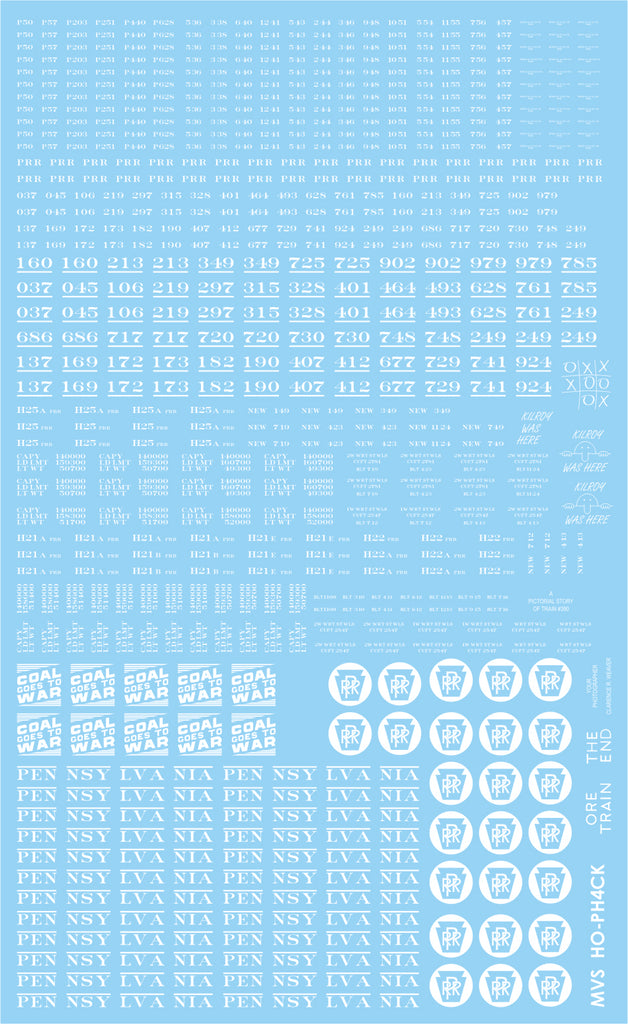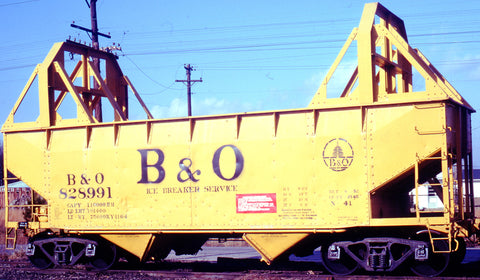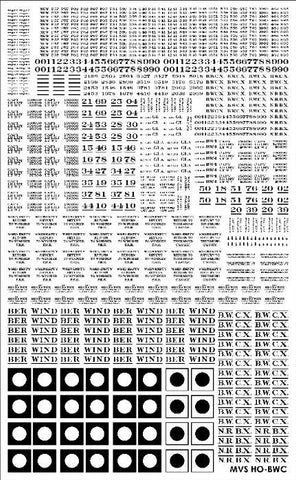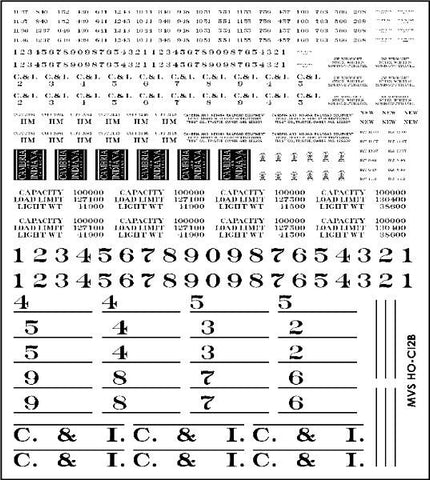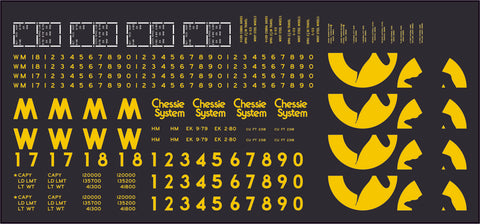Thank you for buying this decal sheet. This set was produced to introduce a more comprehensive set for these classes, which hadn't been done by previous manufacturers.
Beginning in 1909, the PRR introduced the H21 class of hoppers; by 1951 the class had peaked with a mammoth count of 39,699 cars. Known for its longevity in the fleet, this car became a signature of the Pennsy’s coal trains. This class of car was rebuilt many times throughout the years. Notable classes wearing the Circle Keystone scheme were H21a, H21b, and H21e. Some of these cars lasted to the end of the PRR in 1968. However, most were scrapped by Conrail.
The H21 class has been produced in plastic by Bowser and resin by Westerfield.
Beginning in 1912, the PRR introduced the H22 class, which was designed for hauling coke. A key feature of the class was its uniquely designed sides, which were built to necessitate easier loading of coke, and also try to prevent heap overloading. Starting in 1922, conversions of the H22 hoppers started to take place. The major external difference was closing off the coke gates. By October 1930, out of 4,169 cars, only 468 were H22’s, with the remainder being H22a’s. As the H22a’s started to age, some were again rebuilt, but as H21a’s. Fleet numbers diminished so much that by the mid-1940’s thee were only 1,500 cars, and by 1955, only 24 remained on the roster, the rest either scrapped or converted to an H21 subclass. None of these cars lasted to the end of the PRR in 1968.
The H22 and H22a class has been produced in plastic by Bowser.
Between 1919 and 1923, the PRR had 3,000 class H25 hoppers built. It differed subtly in appearance from the H21a, and was done so because of lessons learned from the H21, H22 and H24 class hopper cars. By the 1930's, there were over 5,000 of these cars on the PRR system. Starting in 1949 some H25's were rebuilt into class H25, which was identical to the PRR's later H21g class. By April 1955 643 of the remaining 3,127 in service H25's were converted to H25a's. These cars, due to their age did not last into the Penn Central Merger era.
The H25 Class produced by two brass importers, Sunset and Railworks, while both are externally correct, on the Sunset version, the sides were pressed on a die, leaving an indentation on the interior of the car which isn't correct, however the Railworks version is completely accurate. In addition to brass, this class has also been done in resin by F&C. For modeling a member of the H25a class, one simply needs to use a Bowser H21a kit, with a non-reinforced top chord and some minor modifications to the ends.
This set contains enough data to do 12 cars, This includes 6 H21’s, 2 H22’s, & 4 H25’s. There are six different reweigh/repack dates cover locations system wide and multiple re-weigh dates ranging from the mid 1930’s through to the late 1950’s. Also you’ll find some chalk markings including Kilroy with and without the face, as well as markings used during the filming of Clarence Weaver’s infamous film “Ore Train”.
The “Coal Goes to War” monogram only appeared on the 4-bay classes which were being rebuilt and repainted during WW2. Following conclusion of the war, the logo was painted over during its re-weigh, and later the cars would have been repainted entirely as-needed, with the logo being eliminated. None remained in this scheme by 1954.
For painting instructions any of these hopper cars in the Circle Keystone Monogram scheme (pre-1954) the entire car, including underbody and trucks is to be painted in Freight Car Color.
For references in regard to the PRR's Open Hopper Car
fleet please consult Pennsylvania Railroad Steel Open Hopper Cars by John Teichmoeller and Volumes 1-3 of the PRR Color Guide.
